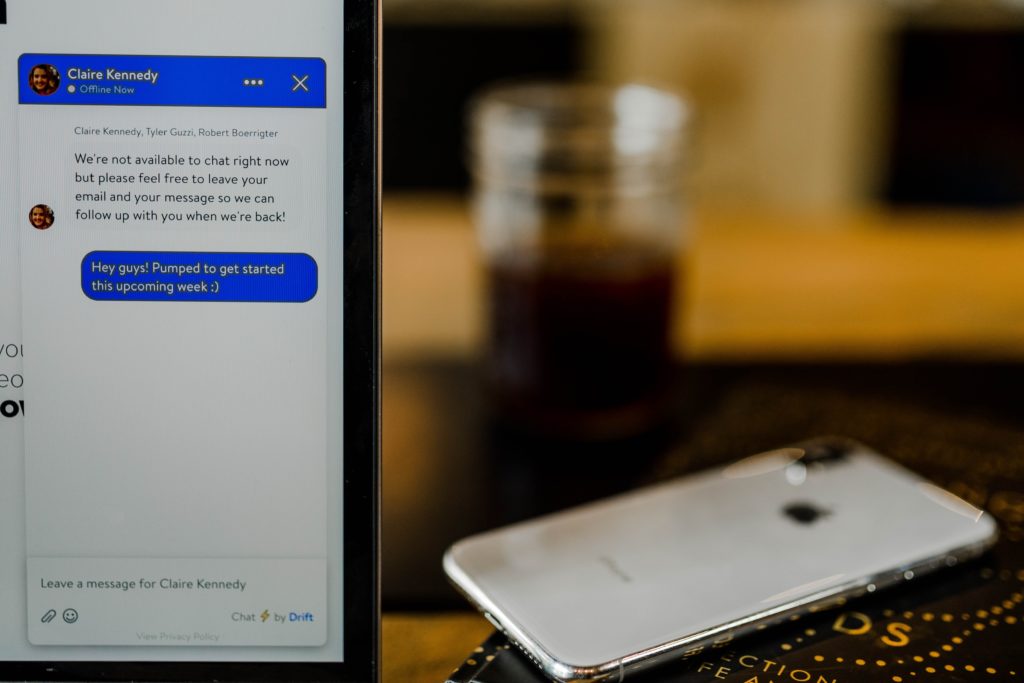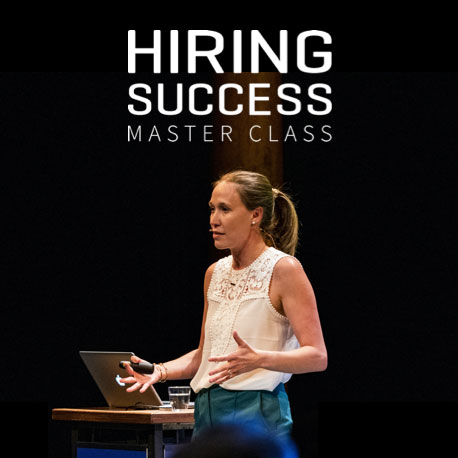Recruiters are no stranger to automation technology. Over the last five years, the topic has increasingly appeared in white papers, case studies, and industry groups such as Recruiting Brainfood. Even though automation technology may not be a part of the average recruiter’s tech stack, Deloitte found that 20% of companies said they plan to implement a virtual assistant within the next two years. We will cover how this technology can be implemented in a number of ways…
- Attracting new talent: Find new ways to spread the word about your open reqs.
- Creating a better candidate experience: Make the application process easy and logical for candidates.
- Prescreening and prioritization: Find the needle in the haystack when candidate volumes are high.
Many recruiters are wary of automation, but the honest truth is that automation will become an essential part of future-proofing business success. But it’s nothing for recruiters to fear, as automation technology makes hiring easier and streamlines processes and the experts agree…
Digital job disruption” (ie. automation) is not a job-killer, it’s mandatory to deal with a crisis…
“Digital job disruption” (ie. automation) is not a job-killer, it’s mandatory to deal with a crisis. So get going on your digital transformation and don’t wait any more.”— Josh Bersin, Global Data Analyst
But what does it mean to implement automation? And how does it help recruiters reach hiring success? From a high-level perspective automation technology is a piece of software that takes over a manual task with as little human interaction as possible. In recruitment, these tools range from simple tasks like application confirmation to powerful AIs that surface best-fit candidates. Automation is important because it increases hiring velocity or the number of jobs filled on time. The goal is to fill roles on time and on budget for measurable hiring success.
Today we are going to take a deep dive into one multi-faceted tool that has been a gamechanger across the board is the recruitment chatbot. What started as a simple FAQ facilitator now supports everything from self-schedule to pre-screening ie doing what automation is supposed to do: Give recruiters more time to focus on building relationships with candidates, smoother processes, and a higher quality talent pool.
1. Using chatbots to attract new talent
QR codes
The traditional channels of engaging new talent have seen a massive shift in the last decade. From the birth of job boards to the extinction of in-person career fairs, recruiters are getting innovative. Zurich-based public transportation company VBZ is using the advertising space on its trams to engage with new talent. How?
Through QR codes that, when scanned, lead the user to the VBZ recruitment chatbot named TramBot. This was the brainchild of the Employer Branding, Florian Schrodt Leader who was brought in to improve how the company progressed.
Career site chatbot
The days of slow and robotic conversations with chatbots are long gone. Thanks to advances in artificial intelligence, natural language processing, and machine learning. Now, companies such as jobpal, have chatbots that can communicate in a human manner and offer contextual answers.
Having a chatbot on a careers website provides an additional channel for candidates to communicate with the recruiting team. If the chatbot has an FAQ feature, it gives the candidate a chance to ask questions that they might not be comfortable asking a recruiter. The chatbot can also answer a huge amount of the repetitive questions recruiters receive.
Chatbots can generally answer 75% of the questions candidates ask…
Chatbots can generally answer 75% of the questions candidates ask, so the recruiter will still have to field some inquiries. But the chatbot runs 24/7 and can talk with multiple candidates at the same time.
Attract talent on social messaging platforms
Attracting talent to your careers website or LinkedIn Company profile is a traditional and effective way of recruiting. But now, recruiters can extend their talent network to popular social messaging platforms. Facebook Messenger engages with 1.3 billion monthly users and WhatsApp has over 1 billion daily users.
Companies can use a chatbot to send reminders, job alerts, or application updates to candidates who have applied for positions. In Q1/Q2 of 2020, one of the world’s largest logistics companies was able to recruit 25% of their talent through their WhatsApp recruitment chatbot.

2. Improving the candidate experience
Provide instant conversations
It’s a familiar situation for a candidate not to hear back from a company whether in regards to a question or application. This has become what is considered a ‘passable’ experience for thousands of applicants. With even recruiters acknowledging that there are often not enough resources to handle the volume of questions and applications— especially for high-volume hiring organizations.
Recruiters with smart chatbots on their career sites have the time to build important relationships with their candidates. This is what companies such as Airbus were able to do with their chatbot Bessie; their recruitment team removed their email from the Airbus careers website five weeks after Bessie went live due to the level of engagement with the chatbot.
Guide candidates to the most relevant roles
Switching jobs can be a life-changing decision for job seekers. Whatever the reason may be for someone looking for a new job, they must be able to find the job that suits them well.
Through a conversational flow with the chatbot, a job seeker can find their ideal job with ease. This works by the job seeker providing their information such as location, job description, years of experience as an example. The chatbot, which is connected to a Talent Acquisition Suite, such as SmartRecruiters, knows all the job positions that are available and can connect them to the candidate’s information.
Shorten the application process
Everyone knows the pain of having to provide duplicate information page after page while applying for a job. The good news is that it doesn’t have to be this way. Thanks to chatbot technology, job seekers can provide their information, upload their CV, and attach their LinkedIn profile through a chatbot—all in under two minutes.
Talent teams that have a shorter application process are more likely to meet their hiring goals on time…
How does this impact hiring success? Talent teams that have a shorter application process are more likely to meet their hiring goals on time, and receive a higher volume of hire-ready candidates.
Interview scheduling
Say the words and recruiters will shudder. Handling hundreds of resumes, coordinating calendars, and scheduling interviews is a daunting task for recruiters who are hiring at scale. The time has come, the technology is here to offload this workload and now candidates can schedule their interviews and recruiters can focus on more valuable tasks.
Chatbots can lead candidates to embedded technology like self-schedule to easily schedule interview slots that work for them.
3. Pre-screening and prioritizing the best candidates
Pre-Screen candidates efficiently
One of the biggest reasons why companies implement a recruitment automation tool is for pre-screening features. Having the ability to automatically prioritize candidates based on the most important factors for that role saves recruiters a huge amount of time. Instead of spending hours scanning resumes, recruitment automation technology can sort of the resumes so all the recruiter has to do is log in to their Applicant Tracking System and go through the top candidates.
This has a huge impact on the quality of talent pools, and it gives candidates with the most relevant experience a better shot at moving from the application to the interview stage. From a recruiters’ perspective, they can bring in better quality candidates easier and in less time.
Knock-out questions deter ineligible applicants
Too many applicants can be as bad as not enough applicants. Recruiters can enter knock-out questions into the chatbot’s conversational flow to eliminate job seekers who do not fit the requirements for the job role, or if the job role they’re looking for doesn’t exist.
Higher-quality talent pool and more hire-ready candidates…
For example, in the case of a food delivery company looking for drivers, the job seeker will need a driver’s license to apply for a job. The knock-out questions act as a blocker for job seekers who could not perform the role. The result for recruiters means a higher-quality talent pool and more hire-ready candidates.
Closing Thoughts
Using recruitment automation and chatbot technology offers a plethora of opportunities for recruiters to help them reach Hiring Success. As companies fast-forward digitization initiatives and as automation technology becomes more accessible to recruitment teams, it’s advisable to get ahead of the curb and start researching to see how automation could help your team be successful.
If you’re interested in learning more about how to build a high-volume hiring strategy, then check out Lesson 7 of the Hiring Success Master Class with our SVP of Hiring Success, Rebecca Carr. This 60-minute lesson will take you through the fundamentals and advanced techniques of high-volume hiring.

 Enroll in the Master Class & earn 6 SHRM credits
Enroll in the Master Class & earn 6 SHRM credits